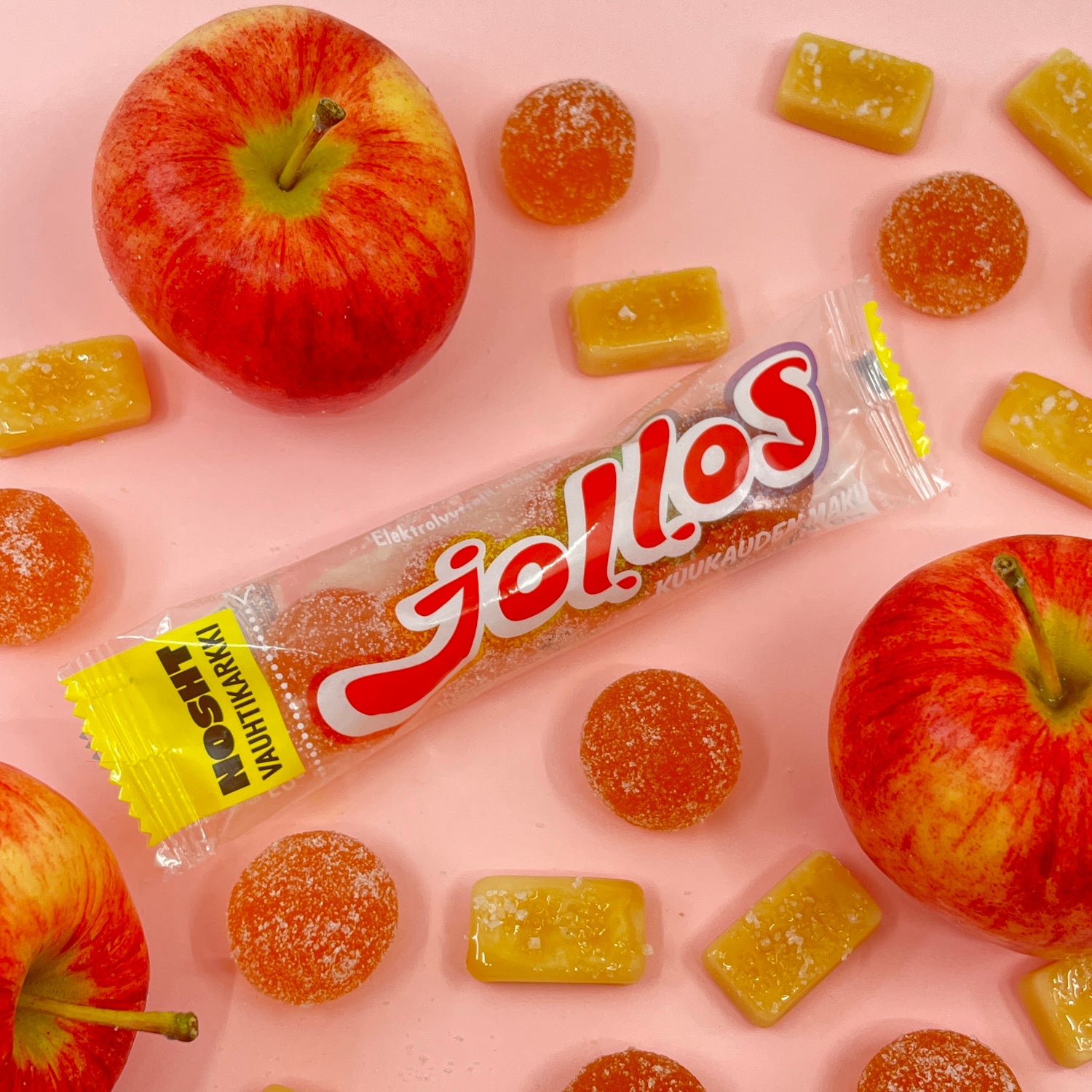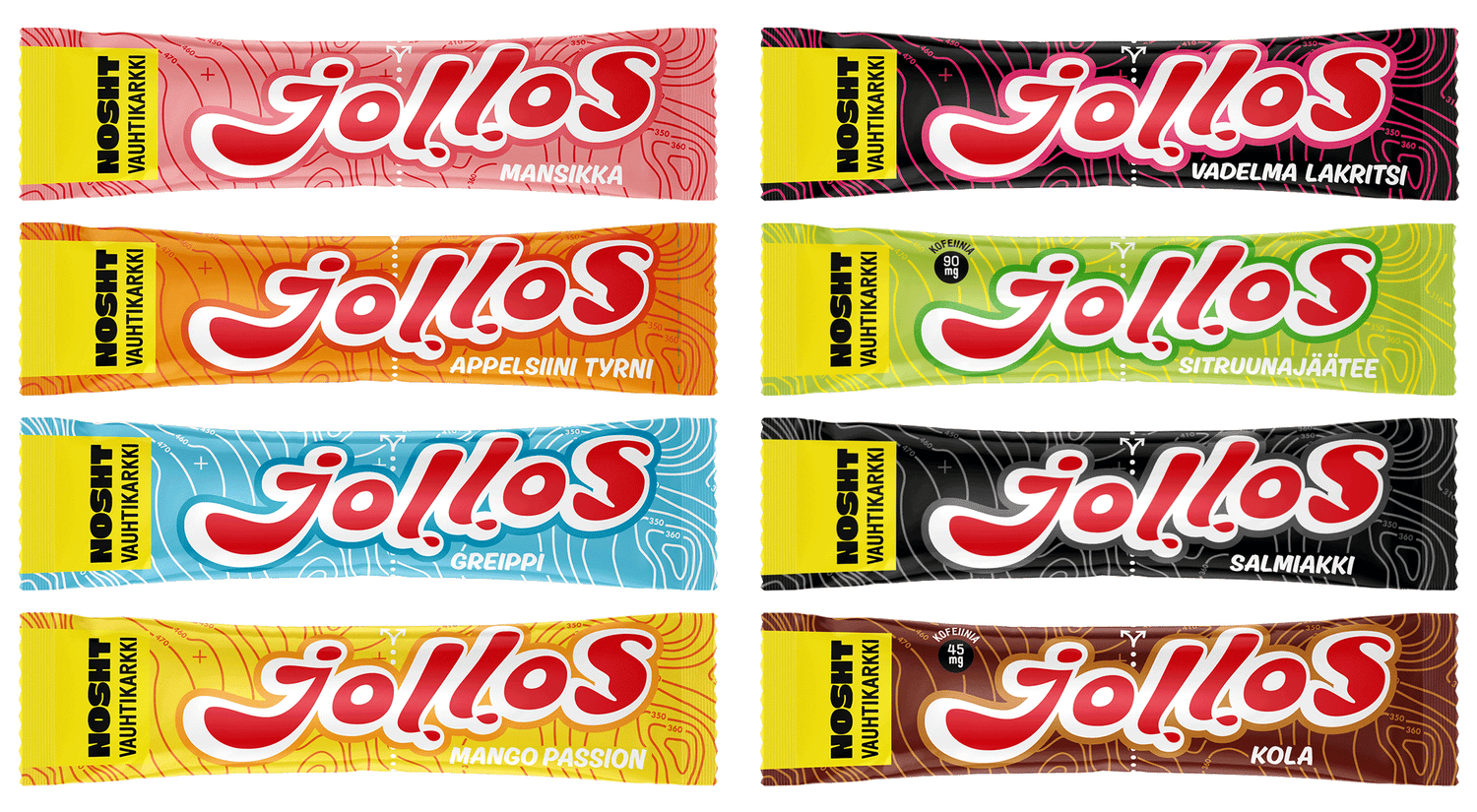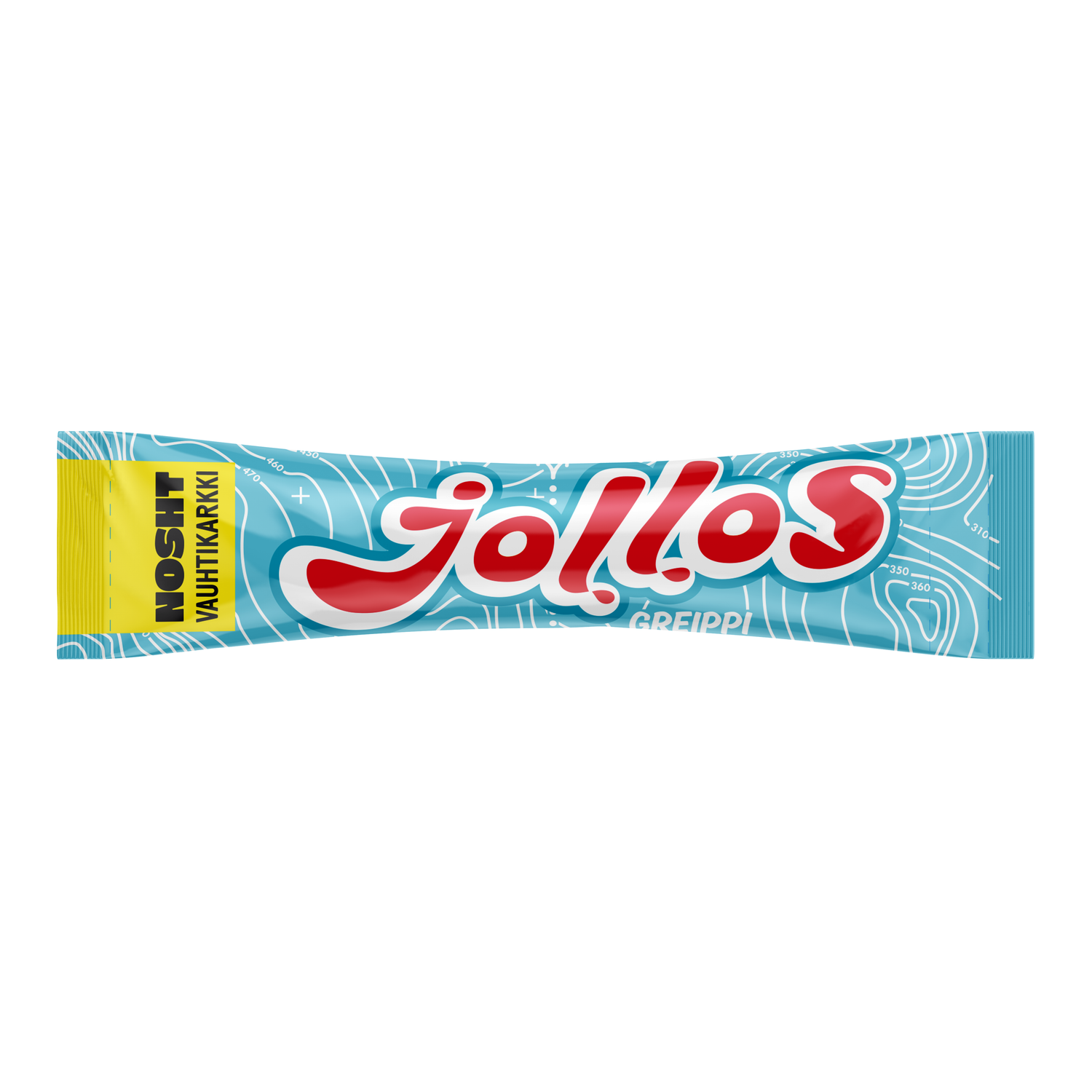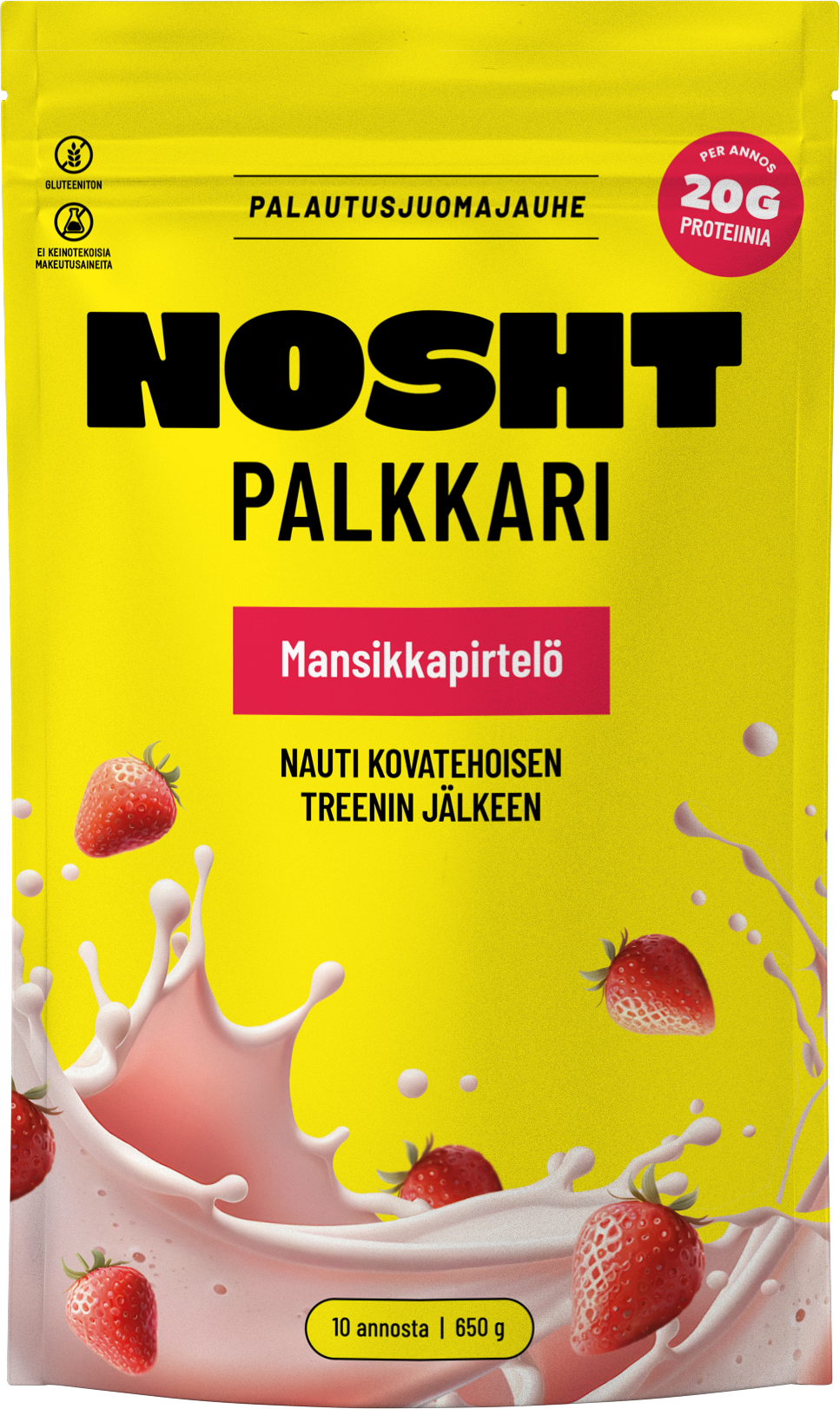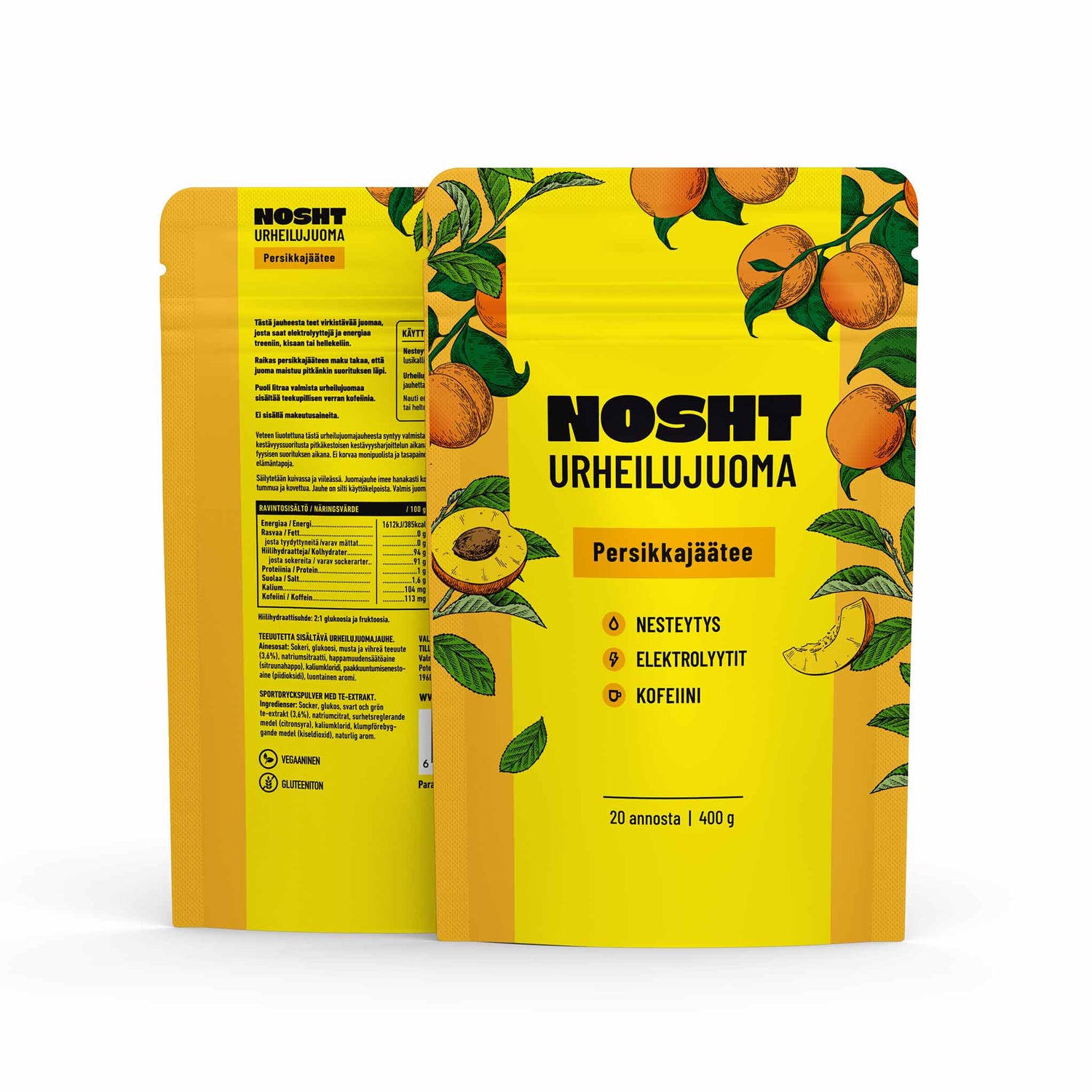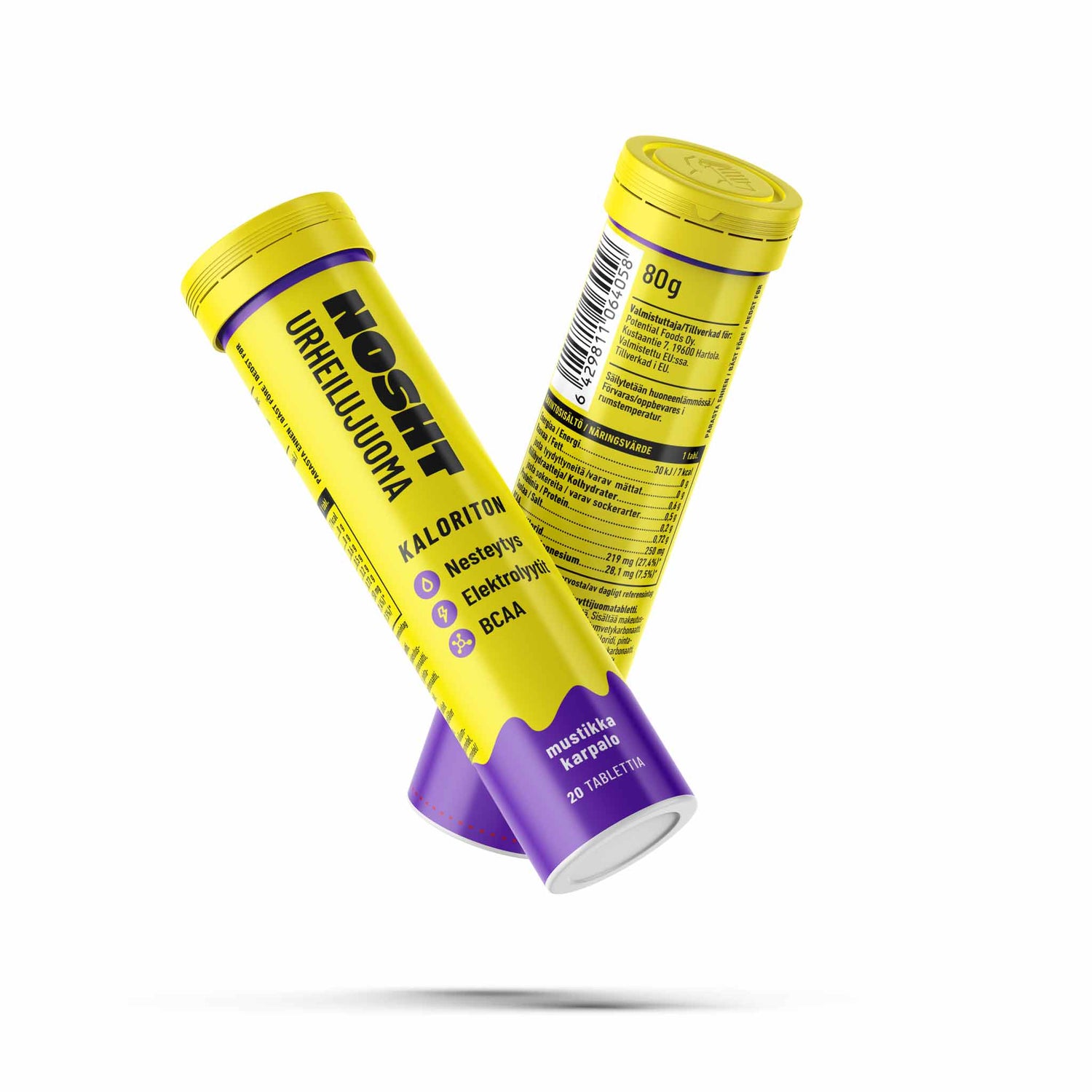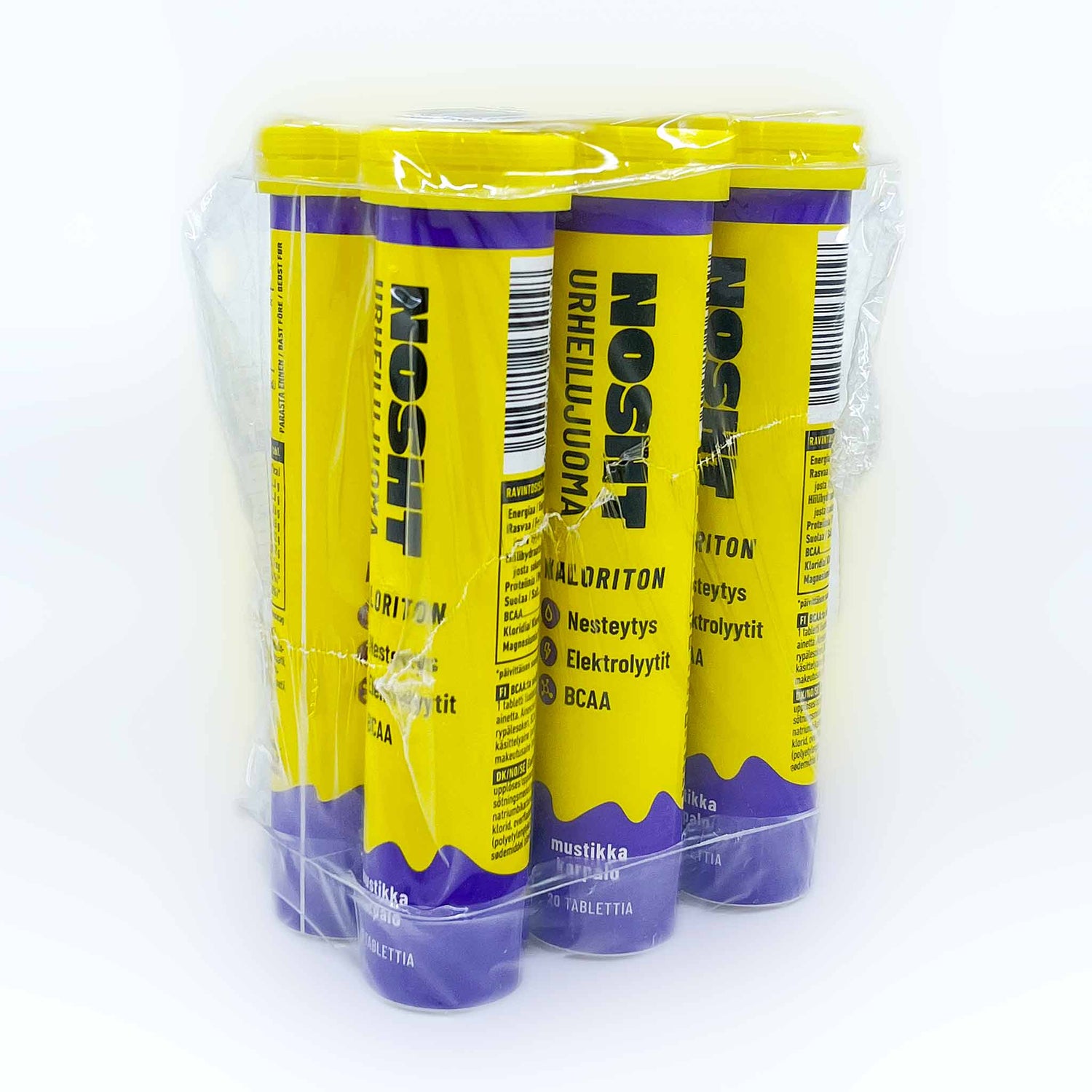Sodium, found in salt, is an essential mineral for the human body. It’s also needed in regulating fluid balance.
In this blog post, we dive into salt: what’s its role in an athlete's diet? How much do you need it during training and racing? And in what form and from what source?
Salt and sodium: same same but different?
First, it’s good to understand the difference between salt and sodium. Sodium (Na, natrium in Latin and many other languages) is an electrolyte that the human body needs to ingest from food and drink. The most common source of sodium is salt or sodium chloride.
Sodium chloride is a mineral found in seawater (sea salt), salt flats and sedimentary rock (rock salt). Sodium chloride is 40% sodium, so in one gram of salt, you get 0.4 grams of sodium.
The sodium in sports nutrition products usually comes from salt or sodium citrate. When you compare different sports drinks or energy gels, pay attention if the amount of salt is mentioned as salt (or sodium chloride) or sodium.
You can compare the amounts of salt and sodium with this formula:
- 1 gram of salt = 0.4 grams of sodium
- 1 gram of sodium = 2.5 grams of salt
How much salt do you need to take during sports?
When you sweat, you lose more than just water. Sweat contains a lot of electrolytes, so it’s smart to pay attention to replenishing those in addition to water.
You need sodium for efficient rehydration. Recent studies show that the relatively high sodium level in a sports drink affects positively the ability of the body to hold a fluid balance during exercise. Another important electrolyte you lose via sweat is chloride. That’s why all Nosht products include sea salt, ie. sodium chloride.
How much water and electrolytes you lose during a workout is unique and also depends on the weather and the nature of your sports. The common recommendation is to ingest between 500 and 1500 mg/h of sodium, depending on how much you sweat and the unique consistency of your sweat.
A good starting point is to take 500-750 mg of sodium per hour and increase the amount if the weather is very hot - or if you feel like you need more.
If you sweat heavily and lose a lot of sodium, replenishing by only water without any sodium may end up in a dangerous state called hyponatremia. The symptoms of hyponatremia include drowsiness, nausea and muscle weakness, and in very severe cases, even seizures and coma.
But taking too much salt can be harmful, too. During sports, taking in too much salt increases the risk of stomach issues. When the osmolality (concentration) in the intestines becomes higher, the water will absorb from the body into the intestines, not the other way around. If your diet is salty, it may be smart to limit the intake of salt during exercise.
Where to get salt during exercise?
A healthy and balanced diet is the most important source of salt also for the athlete. During exercise, you can get salt from many different sources:
- Sports drinks: Sports drinks often have salt to enhance fluid absorption.
- Energy gels and chews: Some energy gels and marmalades include salt.
- Salt tablets: Many athletes take salt pills (usually 0.5g salt/0.2g sodium) during exercise, but the research on their effectiveness is inconclusive.
When you’re making your nutrition and hydration plan for a race or a workout, the most important thing is to calculate the cumulative amount of salt you’ll be taking. How much salt do you plan on taking? From which sources will you take it?
Salt in Nosht products
Nosht products include salt to enhance absorption and maintain electrolyte balance. A good liquid and electrolyte balance supports your performance and recovery and helps to prevent stomach issues during exercise.
In all our products, you’ll find the amount of salt in the nutritional value. This way it’s easier to compare the amount of salt to other things you’ll eat during your training session or race.
- Endurance Drink Mix: sea salt
- High Energy Sports Drink: rock salt
- Nosht Zero Electrolyte Drink Tablet: table salt and baking soda
- Energy Chews: sea salt



